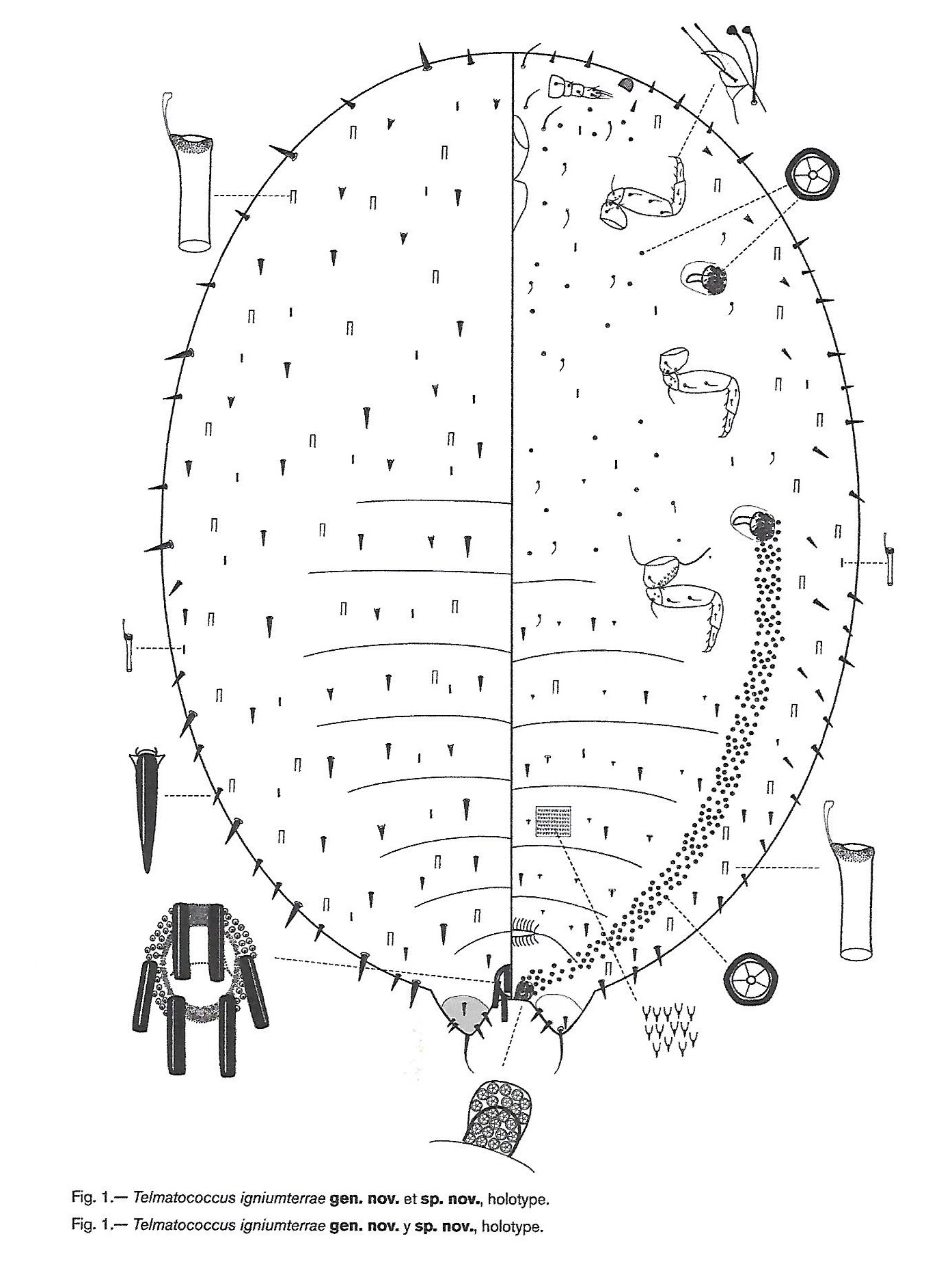Valid Names Results
Telmatococcus igniumterrae Gavrilov-Zimin & Przhiboro, 2016 (Eriococcidae: Telmatococcus)Nomenclatural History
- Telmatococcus igniumterrae Gavrilov-Zimin & Przhiboro 2016: 2-4. Type data: CHILE: Tierra del Fuego, between Lago Fagnano and Seno Almirantazgo, 54.49162°S / 68.89957°W, 103 m. altitude, sphagnum bog, in Sphagnum magellanicum habitat, 11/4/2015, by A. Przhiboro . Holotype, female, by original designation Type depository: St. Petersburg: Zoological Museum, Academy of Science, Russia; accepted valid name Notes: paratypes: 2 females on separate slides, with the same collecting data. Illustr.
Common Names
Ecological Associates
Hosts:
Families: 1 | Genera: 1
- Cyperaceae
- Schoenus | GavrilPr2016 | Two species of flowering plants, namely, Schoenus ?andinus (Cyperaceae) and Tetroncium magellanicum (Juncaginaceae), were abundant in the samples or/and on the perimeter of the sampling areas where the material of the new species was found.
Associates:
Families: 1 | Genera: 1
- Juncaginaceae
- Tetroncium magellanicum | GavrilPr2016
Geographic Distribution
Countries: 1
- Chile
- Tierra del Fuego | GavrilPr2016
Keys
Remarks
- Structure: Female body broadly oval, up to 2 mm long. Antennae very short, about 110 μm long, 4-segmented. Legs small, with shortened segments; hind coxae enlarged, lie on membranous mound, with numerous cuticular protuberances; claw without a denticle, but with a protruded basal part. (Gavrilov-Zimin & Przhiboro, 2016)
- Biology: The sampling locality is a small mountain meso-oligotrophic non-forested sphagnum bog surrounded by open woodland. The type specimens were collected from moist substratum in the Tetroncium magellanicum - Sphagnum magellanicum association forming a carpet community predominated by Sphagnum magellanicum. (Gavrilov-Zimin & Przhiboro, 2016)
- General Remarks: Detailed description and illustration in Gavrilov-Zimin & Przhiboro, 2016.
Illustrations
Citations
- GavrilPr2016: description, diagnosis, distribution, ecology, host, illustration, structure, taxonomy, 2-4
- WilliaDe2020: taxonomy, 199



